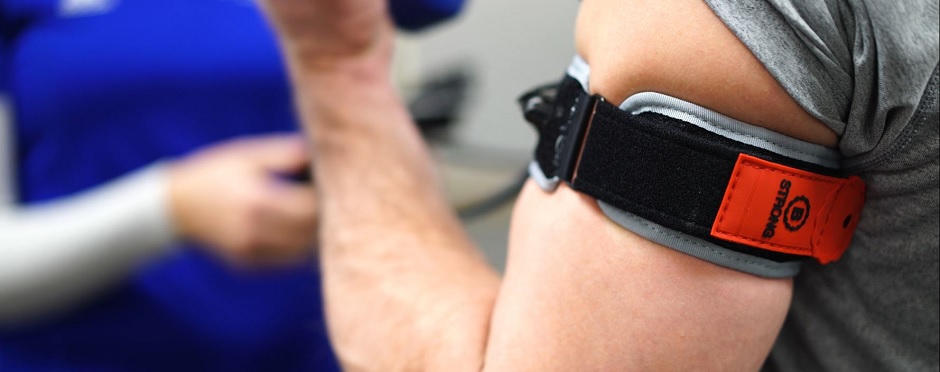Blood Flow Restriction Training For Strength And Hypertrophy ...Posted by Garrigan on June 22nd, 2021 The Benefits of Blood Circulation Constraint Lots of clients in our physical therapy clinic are not able to raise heavy weights sometimes since of discomfort, immobilization, or since of surgical treatment. Blood Circulation Constraint (BFR) Training can be a great rehab tool because it enables patients to profit of an extreme heavy weight-lifting session while only needing the patient to perform low-to moderate-intensity training. During BFR training, a client or professional athlete carries out high repeatings of a particular workout while using a band or cuff around their arm or upper leg with usage of light resistance. The following are physical modifications that can occur secondary to Blood Flow Limitation Training: Enhanced muscular strength Increased muscular cross sectional location Avoidance of muscular atrophy Development of newer and healthier blood vessels Reduced threat of heart disease Enhanced bone mineral density BFR Triggers Muscles to Work More difficult With flexible BFR training, BFR bands are placed near one's arms and/or upper legs.
Elastic BFR bands partially limit the venous blood (oxygen deficient blood flowing from the limbs back to the heart) return. This makes the muscles work even more difficult to pump the blood back to the heart! BFR exercises include durations of exercise and rest. Throughout the periods of workout, blood is quickly flowed from our heart, to our arteries, to our limbs, to our veins and back to the heart. The muscles in the limb have to work even harder to pump the venous blood past the BFR bands back to the heart. At the regional cellular level, this dam result produces a disturbance of homeostasis lower oxygen levels in the muscle cells, acidic muscle cells, and other changes that make the muscles tiredness quickly, simply like they would with heavy weights. How the Brain Reacts to Altering Oxygen Levels Similar to heavy weight lifting, BFR Training allows your body to experience periods of quick blood circulation of blood where oxygen is flowing throughout your entire circulatory system. The absence of oxygen in our limbs is notable to our body, and our central nerve system sends out the message to our brain that our limbs "aren't getting sufficient oxygen." It is extremely important to understand that the reduced oxygen levels that our body experiences is short-lived, safe and essential for BFR to work. Like it? Share it!More by this author |



